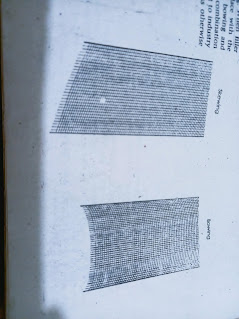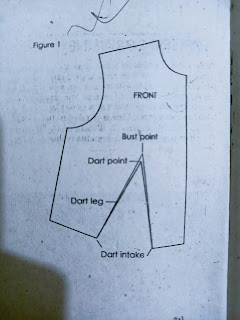Hi, guys. I know you are also stuck with some patternmaking terms just like me. Sometimes, we can't understand patterns without these terms properly. As a result, we can't describe our designs to the tailors. Wholly, it's a disaster sometimes.
So, today I will give you some important terms and definitions of patternmaking. I will try to cover maximum terms in this post. But, if I can't, then I will give you another post link at the bottom of the rest over terms.
All of the terms and definitions are from "Patternmaking for Fashion Design"- fifth edition by Helen Joseph- Armstrong.
I'm also learning fashion designing, so I know how the importance of these terms. Normally, these types of definitions and terms are needed in the apparel industry. If you want to add any important terms or definitions, you can comment below. So, let's dig it:
Muslin: A plain- woven cotton made from bleached or unbleached corded yarns in a variety of weights:
- Coarse- weave
- Light-weight
- Heavyweight
Grain: The direction in which the yarn is woven or knitted.
Selvage: The narrow, firmly woven, and finished stripe on both lengthwise grain edges of the woven fabric. Clipping selvage releases tension.
Bias: A slanting or diagonal line cut or sewn across the weave of the cloth.
True Bias: The angle line that intersects with the lengthwise and crosswise grains at a 45-degree angle. True bias has given and stretch, easily conforming to the figures' contours. Flares, cowls, and drapes work best when cut on the true bias.
Bowing and skewing: When filler threads don't interlace with the straight grains at 90 degrees, bowing and skewing, or a one-sided combination occurs and is often sent to the industry in that condition unless otherwise instructed.
Dart: A wedge-shaped cut out in a pattern to control the fit of a garment when stitched.
Bust point: A designated place on the bust and pattern and referred to in flat patternmaking as the pivotal point or apex.
Dart legs: The two lines that cover at a predetermined point on the pattern.
Dart Intake: The amount of excess confined between dart legs. Its purpose is to take up excess where it is not needed and to gradually release fabric where it is needed to control the fit of the garment.
Trueing: The bending and straightening of pencil lines, cross marks, and dot marks for the purpose of establishing correct seam lengths.
Blending: A purpose of smoothing, shaping, and rounding angular lines along a seam for a smooth transition from one point to the next and for blending marks made on the pattern or muslin.
I will post the other terms and definitions in the below post.
apparel









0 Comments